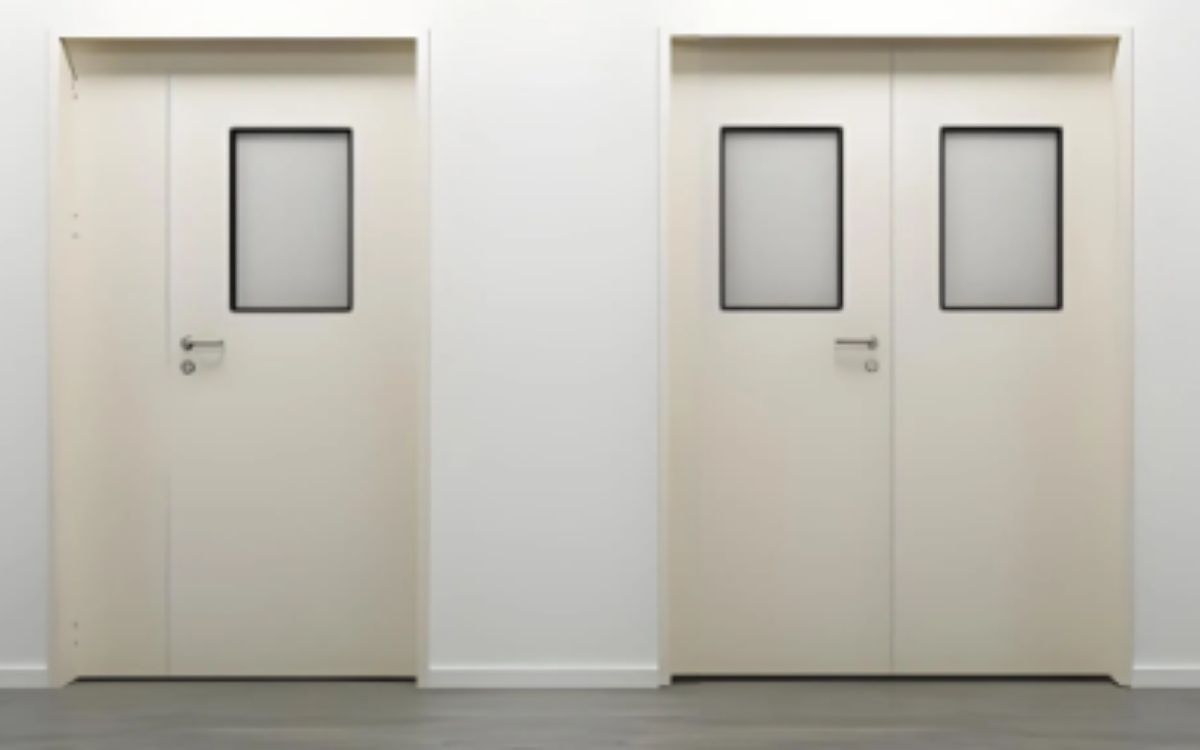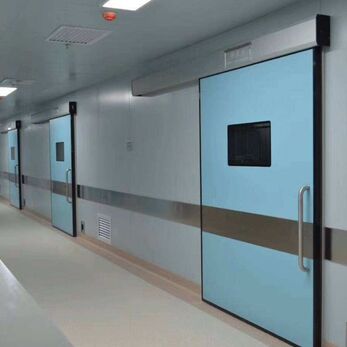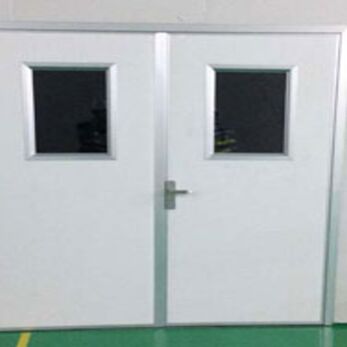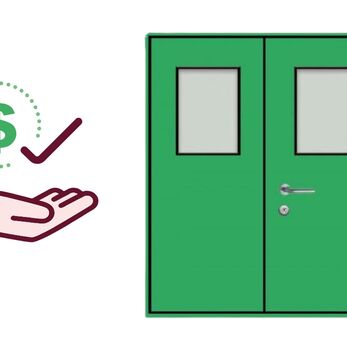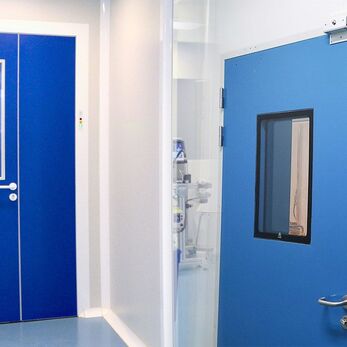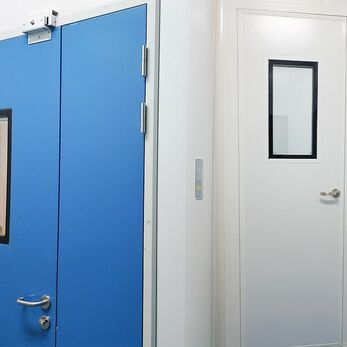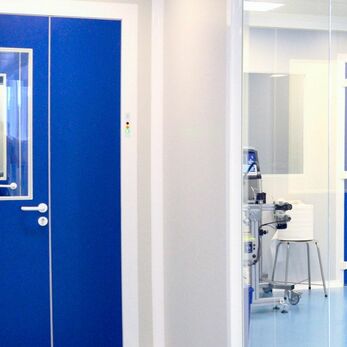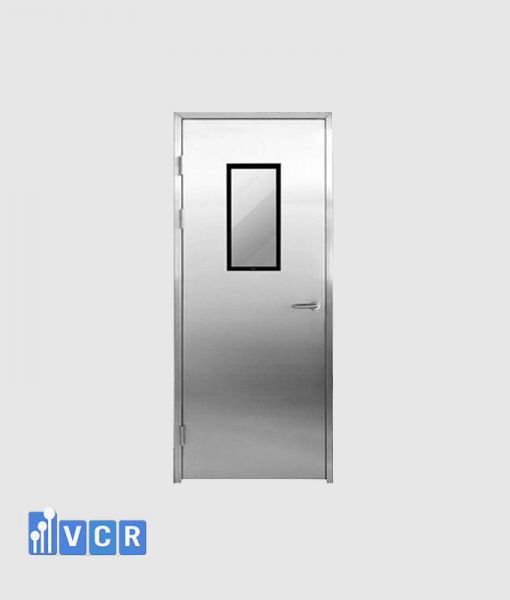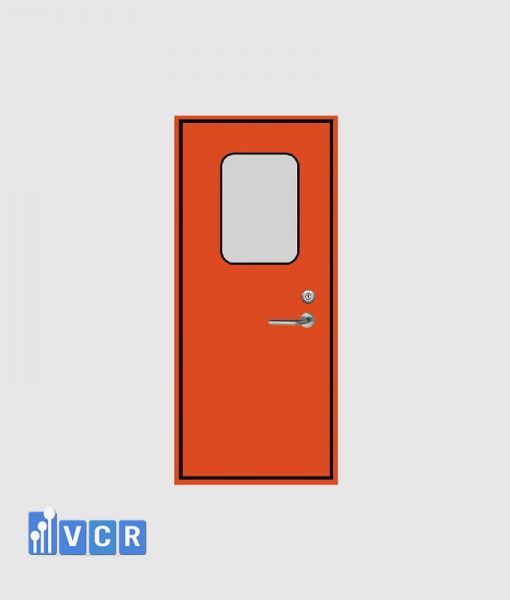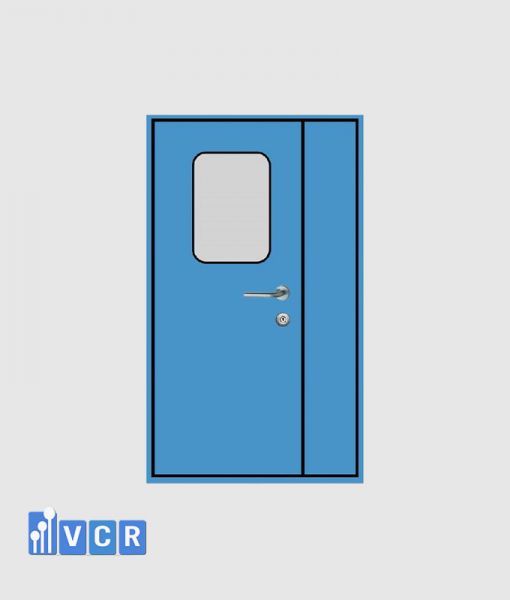Electrostatic-insulating, dust-tight cleanroom doors help maintain stable production, prevent ESD, and block fine dust. VCR provides ISO 14644 and IEC 61340-5-1 compliant doors with high airtightness, durability, and customizable designs.
- Cleanroom Doors for the Electronics Industry - A Solution to Protect Ultra-Small Components from Dust and Electrostatic Discharge
- Criteria for Choosing Cleanroom Doors in Electronics Factories
- VCR Cleanroom as a Supplier of Cleanroom Doors for the Electronics Industry
- Ordering & Installation Procedure of Cleanroom Doors by VCR
- Frequently Asked Questions About Cleanroom Doors for the Electronics Industry
Cleanroom Doors for the Electronics Industry - A Solution to Protect Ultra-Small Components from Dust and Electrostatic Discharge
The electronics industry is one of the fields with the most demanding production environments. Components such as microcircuits, semiconductor chips, and printed circuit boards (PCBs) are extremely sensitive to fine dust, humidity, and electrostatic phenomena. Even a single dust particle or electrostatic discharge can cause component failure or ruin the part-resulting in significant production losses.
Hence, cleanrooms have become mandatory in electronics factories, especially in areas producing precision components. Within a cleanroom structure, the cleanroom door plays a crucial role to:
-
Prevent contaminated air from entering
-
Maintain stable positive pressure between zones
-
Isolate zones with differing cleanliness requirements
-
Prevent electrostatic leaks that may damage equipment
What standards must cleanroom doors satisfy?
To meet modern electronics production environments, cleanroom doors need to meet stringent standards like:
-
ISO 14644 (to control particle counts in air)
-
Electrostatic discharge (ESD) per IEC 61340-5-1
-
High airtightness to prevent pressure loss and dust ingress
-
Use of non-particle-generating materials - easy to clean
-
Integration with interlocks, sensors, or automatic control if needed
Choosing an appropriate electrostatic-insulating, dust-tight cleanroom door not only ensures adherence to international standards but also optimizes operational efficiency and minimizes product defect risk during production.
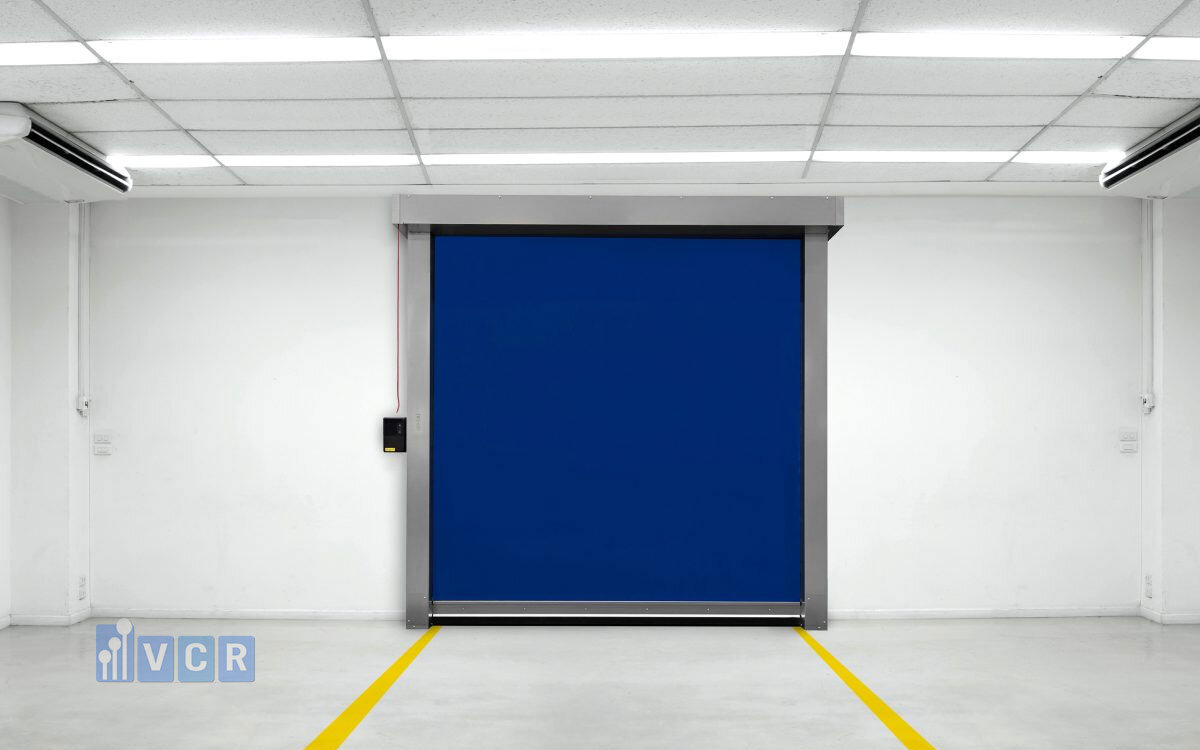
Read more: Latest price list of Clean room doors used in electronics factories
Criteria for Choosing Cleanroom Doors in Electronics Factories
Not all door types are suitable for the stringent environment of electronics manufacturing. To ensure effective control of dust and electrostatic discharge, factories should select doors based on clear technical criteria:
Dust sealing ability & pressure leakage resistance
The door must seal tightly when closed to:
- Prevent external dust infiltration
- Maintain positive pressure in high-class cleanrooms
- Optimize HVAC efficiency and reduce energy consumption
It is advisable to favor doors with rubber gaskets, multi-point locks, or interlock systems to prevent simultaneous opening of multiple doors.
Electrostatic discharge (ESD) capability
Electrostatic discharge is “enemy number one” for electronic components. Therefore, cleanroom doors should:
- Use surface materials that can dissipate electrical charge
- Provide test reports in compliance with IEC 61340-5-1
- Optionally include ESD film or antistatic coatings
Antibacterial, easy-to-clean materials
Door surfaces should:
- Not emit particles on impact
- Resist dust adhesion and mild chemicals
- Be easy to clean using isopropyl alcohol or neutral cleaning solutions
Preferred materials include electrostatically painted steel, 304 stainless steel, and aluminum extrusions.
Durability and smooth operation
- The door should operate stably under high frequency
- Minimize noise and vibration during opening/closing
- Average lifespan should be in the range of 5–10 years
Smart options: automatic doors, sensors, interlocks
- Automatic doors help control traffic in/out without touch
- Motion sensors save energy
- Interlock systems allow only one door to open at once to prevent cross-contamination
Comparison of popular door types in electronics factories
| Door Type | Main Advantages | Disadvantages | Common Applications |
|---|---|---|---|
| Hinged door | Good airtightness, affordable cost | Manual opening, difficult to control airflow | Offices, auxiliary rooms |
| Sliding door | Space-saving, can be automated | Airtightness depends on design | Main aisles, SMT zones |
| High-speed rolling door | Very fast, fully automatic, good sealing | High cost, needs regular maintenance | Component warehouses, packaging zones |
It is essential to select the proper door type suited for each functional area to balance cost and operational efficiency in an electronics factory.
Read more: Choose the right Cleanroom Door with 5 factors
VCR Cleanroom as a Supplier of Cleanroom Doors for the Electronics Industry
When choosing cleanroom doors for electronics factories, you need not only compliant products but also a supplier who understands the industry, technical standards, and has practical implementation experience. Many FDI electronics enterprises have chosen VCR Cleanroom for door supply and installation.
Why choose VCR?
Real-world experience in many FDI factories
VCR has successfully implemented cleanroom door systems for:
- PCB manufacturing and SMT plants
- Assembly workshops for consumer and industrial electronics
- Test, inspection, storage, and packing zones
Their understanding of specific zone needs helps them propose optimal door types, materials, and opening mechanisms.
Layout-based consulting - selecting the right door per zone
- Test areas need completely airtight doors
- SMT zones require ESD doors with automated operation
- Component storage requires high-speed rolling doors with dust-crossing prevention
VCR offers customized solutions fitting each layout, rather than applying one standard door everywhere.
Products meeting ISO standards - full ESD validation
- Doors certified ISO 14644 to suit required cleanliness levels
- Antistatic materials tested per IEC 61340-5-1
- Full test reports and quality certificates included
Custom fabrication - fast installation, periodic maintenance
- They accept special dimension fabrication
- Accessory options: observation windows, interlock locks, sensors
- VCR’s technicians install, run trial operations, and hand over
- 6-month periodic maintenance policy to ensure sealing and stable operation
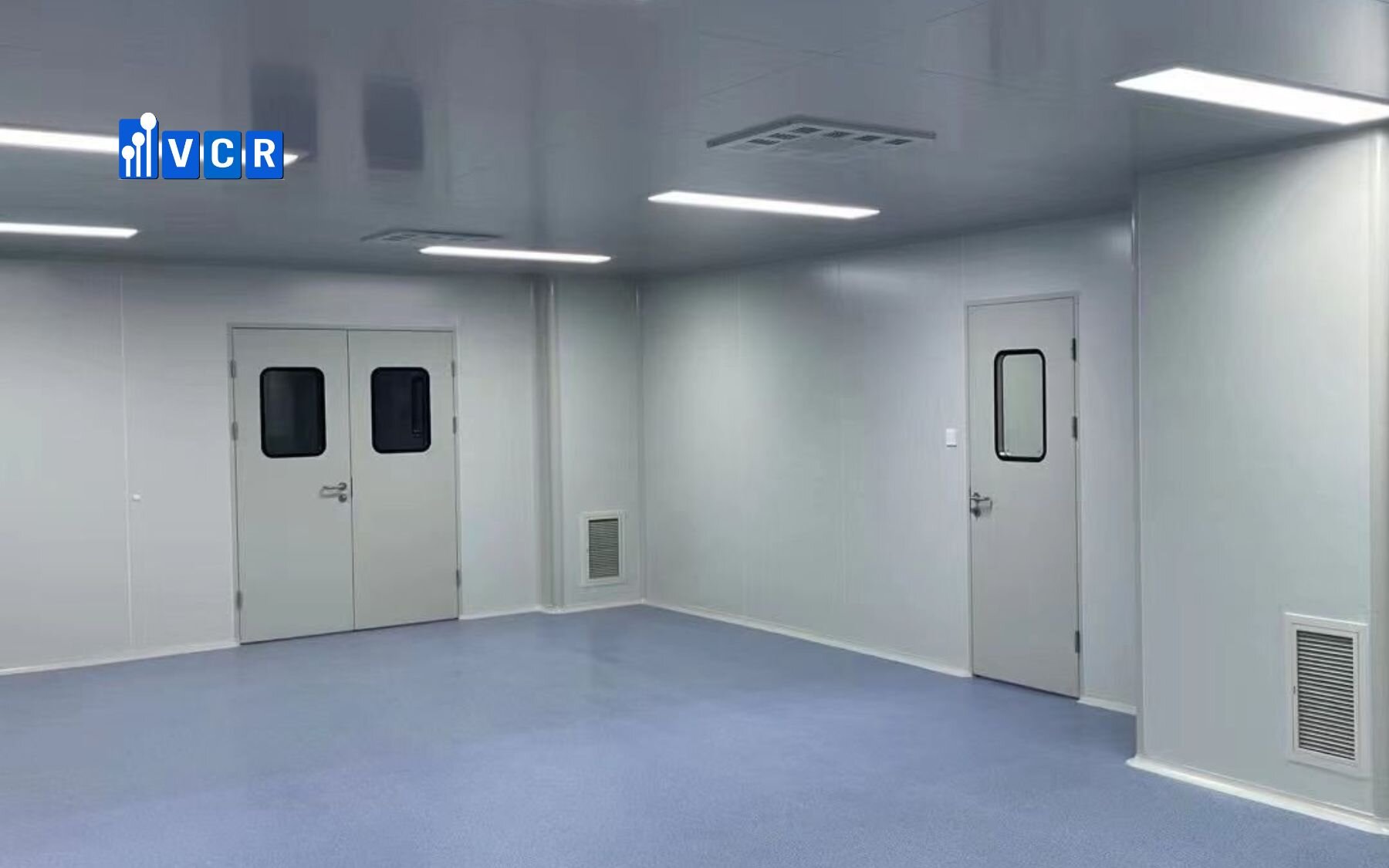
Read more: Expert Guide to Cleanroom Steel Door Installation
Ordering & Installation Procedure of Cleanroom Doors by VCR
To ensure efficient construction, accurate cleanroom standards, and time savings for customers, VCR - Cleanroom door supplier has established a 5-step standardized door ordering and installation process suited for the electronics industry:
Requirement reception & layout plans
Customer provides:
- Factory info (industry, required cleanliness class)
- Layout drawings or photographs of installation site
- Any special requirements (automation, ESD, interlock, etc.)
VCR provides preliminary door suggestions per zone.
Proposal & preliminary quotation
Based on received information, VCR sends:
- Proposed door types, materials, opening methods, and accessories
- Preliminary technical parameters and quote
- Estimated installation schedule
On-site survey if needed
For complex or precision projects, the technical team:
- Visits the site to measure installation dimensions
- Advises on handling emergent issues
- Creates a detailed execution plan
Manufacturing - Delivery - On-site installation
- Doors are manufactured per approved dimensions and options
- Delivered on schedule, packaged to prevent damage
- VCR’s technical team installs, runs performance tests, and hands over the door
Handover - Warranty - Periodic Maintenance
- Door handover includes test reports (if available), warranty certs, and user instructions
- Standard warranty is 12 months
- Periodic maintenance every 6 months to ensure sealing, sensor/interlock function, lubrication, etc.
This clear and professional process helps VCR meet tight timelines in electronics factory projects while optimizing costs and performance.
Read more: Provider of Moisture‑Resistant, Mold‑Resistant Cleanroom Doors for the Food Industry
Frequently Asked Questions About Cleanroom Doors for the Electronics Industry
How are cleanroom doors for electronics different from those for the pharmaceutical industry?
Both industries demand stringent cleanliness, but electronics especially emphasize electrostatic discharge (ESD) resistance. Cleanroom doors for electronics usually require conductive or dissipative materials and compliance with IEC 61340-5-1.
Can cleanroom doors be installed on existing panel walls?
Yes. VCR’s technical team can survey onsite, reinforce framework or propose installation designs compatible with panel thickness and structure, ensuring airtightness and aesthetics.
Do VCR’s cleanroom doors have ESD certification?
Yes. VCR provides ESD-capable cleanroom doors accompanied by:
-
Electrostatic discharge test reports
-
Certifications meeting IEC 61340-5-1
-
Optional ESD film or conductive aluminum extrusion
How often should cleanroom doors be maintained?
VCR recommends periodic maintenance every 6 months, including:
-
Checking airtightness
-
Cleaning gaskets, sliding tracks (if any)
-
Checking sensors, interlock systems
-
Lubricating hinges/motor parts
Routine maintenance increases door lifespan and ensures safety and performance in cleanrooms.
Need a dust-tight, electrostatic-insulating cleanroom door solution for electronics?
Let VCR accompany you in building a production environment that is clean, airtight, safe, and effective.
Contact
Hotline: 090.123.9008
Email: [email protected]
Website: https://cuaphongsachvcr.com/
Dat VCR




